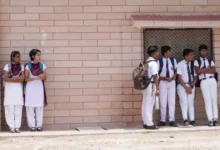Use This Special Guide To Find Rajkot’s Hidden Treasures
8 Things to Recognize Before Traveling to Rajkot
Rajkot is a charming city that seamlessly blends technology and history. It is the entry point to Gujarat, the dynamic western state of India. Rajkot, the state’s fourth-biggest city, offers tourists a glimpse of traditional Gujarati culture with its historic Hindu temples, vibrant marketplaces, rich folklore, and delicious local cuisine.

Here are some helpful insider suggestions that are worth keeping in mind before you pack your things and leave for your trip to Rajkot.
1. Cultural and Historical Background
Rajkot: The Former Saurashtra Capital
In former times, when British administrators ruled the area, Rajkot was the capital of the princely state of Saurashtra.
The city is rich in history and has numerous architectural and cultural relics from its illustrious past, such as traditional havelis that belonged to affluent merchants and ancient kings.
This is the home of Mahatma Gandhi during his formative years. It is called Kaba Gandhi No Delo and provides tourists with an insight into the early years of his life.
2. Holidays and Festivities
Rajkot observes a number of Hindu holidays, including Janmashtami, Navratri, Diwali, and Uttarayan, which is known for its kite-flying celebration.
Even with the local folk arts, classical dance and music performances are essential components of the cultural fabric.
During Navratri, people go from far and wide to see the Garba dance. To the sounds of live music and dandiya rhythms, the men and women in traditional attire dance the night away in coordinated routines.
3. Handmade goods and food The Kathiawadi Culture Represented
Rajkot’s history of handicrafts includes junk jewelry, lacquerware toys, clay artifacts, and textiles like Ajrakh block prints, Bandhani, and batik.
Delicious meals and snacks like dhokla, fafda, thepla, undhiyu, and khandvi, as well as sweets like ghari and refreshing beverages like chaas, are all part of the traditional Kathiwadi cuisine.
Traditional clothing, such as the Ghaghra choli, which has exquisite mirror work and embroidery, is another example of Saurashtra’s distinctive local culture.
4. Markets and Bazaars: Buy Until You Drop The Hub of the Wholesale Market
Because of its trained workforce and infrastructure, Rajkot is known as one of India’s major centers for the manufacturing and export of machine tools, car components, bearings, and forging equipment.
Many MNCs and exporters of engineering items are located in the industrial zones, while local commerce and service requirements are met by the retail establishments.
5. Heaven for Handicrafts and Textiles
Rajkot’s historic bazaars, brimming with ethnic clothing, stoles, costume jewelry, clay toys, and trinkets, exude an old-world charm.
Travelers from outside and locals alike swarm the winding pathways of Soni Bazaar and Bangdi Bazaar in search of undiscovered retail gems.
The contemporary stores offer clothing made with Patola silk weaves, Ajrakh block patterns, colors and prints applied by Batik techniques, and the renowned Bandhani.
6. Regional Tastes Around Every Turn
Fresh local food is available at the farmer’s vegetable and spice market in the area, along with dried fruits and savory treats.
Street corners are crowded with food vendors selling street cuisine such as dabeli, sai bhajiya, sev khamani, dhoklas, papdis, papdis, and chaats.
Sweet delights include must-try desserts like ghari, gulab pak, and basundi.
7. Evolution of Architecture: Prehistoric Temples and Monuments
Numerous stones and marbles Hindu and Jain temples, such the Dwarkadhish Temple and the Shri Ramakrishna Ashrama, have magnificent carvings, tall spires, and beautifully carved pillars, domes, and torans.
The stunning lakes and step wells serve as sacred and picturesque locations for pilgrimages, and their grounds include little shrines.
8. Grandeur Coloniale
Rajkot is filled with historic stone and brick buildings that exhibit influences from European architecture.
Built under the British Raj, the landmark 200-year-old colonial Alfred High School and Watson Museum buildings have Gothic arches, stained glass accents, fences, and classical statuary.
A combination of Indian and colonial ideas, such as projection balconies, ornamental overhangs, and jharokhas, coexist with Gothic pillars, carvings, and louvred doors in many old-styled havelis.






